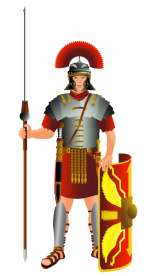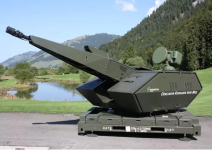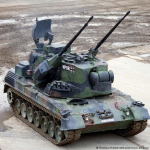You defend those cities better if you engage the enemy farther away, and don't lose your assets to counter battery fire.
This is absolutely true...
And yet Poland finds it necessary to back its forces all the up to its western border to buy them space and time against an eastern enemy despite the fact that the western border has historically been at least as problematic as the eastern border. The point is that there is no safe place in Poland, or any European country for the locals. The locals deserve a defence and that defence has to be more than the promise of eliminating their attacker at some indeterminate time in the future when, or if, the counter force achieves that aim.
Thus the popularity of Iron Dome in Israel, C-RAM at bases in Afghanistan and Anti-Aircraft Regiments in WW2 Britain.
Contrary to popular belief I am not against Canada generating a well-founded Mechanized Brigade Group. I support that concept and I think we can afford to do it well and we should do it well. My concern is that we seem to be focused on that outcome to the exclusion of all others. I understand there is a fight on for scarce dollars (although I am told there are more dollars available than we seem to manage to spend).
To put my position in historic terms I believe the army needs both a sword AND a shield in order to be a balanced force capable of managing a broad range of threats. The Mech Brigade is the sword. Every army needs one. But we have no shield.
Instead of this

I believe our Canadian Army looks more like this

The fencer is offensively oriented, has to stay actively engaged to defend, is poorly protected, tied to a piste and has little staying power despite being well trained.
We have a sabre. We need a shield as well.
Also, have you considered how the ______s might feel about foreign forces establishing fixed defensive kit in their cities? Mobile systems can be brought in as needed, then moved away when not.
If we were to deliver an anti-aircraft regiment to Kyiv do you think the locals would complain?
As for fixed


I am persuaded that this is a "cake and eat it" solution. It can dropped off to defend a fixed location pro tem. It can be removed rapidly with no lasting scars. It can be operated in the portee mode. It can even be fired on the move. It can be transported on a light truck, an armoured truck, an APC, a boat or even underslung by helicopter.
I find it no different to the ubiquitous Bofors 40s, Oerlikon 20s or even Browning 50s. It is a package that can be employed and deployed widely as part of a system, as part of a network.
More simply, Canada can't afford to have both fixed and mobile systems right now.
Precisely.
A mobile system can do everything a fixed system can, but a fixed system can't do what mobile systems do.
But the mobile system, and by that I mean the "dedicated" mobile system tailored for a specific task, like, for example, the 1970s vintage Gepard, costs more and is harder to deploy resulting in fewer guns on the ground, fewer shells in the air and fewer targets destroyed.... and more casualties on the ground.

The other major advantage of the SkyRanger turret over the Gepard turret is that it is unmanned so that when the guns attract return fire, as they inevitably will, and when the guns are destroyed, as they inevitably will be, only the gun is lost, not the four man crew serving the guns.
My overall take?
1 Canadian Div takes over the command of
6 CCSB
1, 2 and 5 CMBGs and
1 Wing.
1,2 and 5 CMBGs lose 3 RCR/PPCLI/R22eR to 1 Wing to create a tactical heliportable formation alongside 1,2 and 5 CMBGs.
1,2 and 5 CMBGs revert to a 4 CMBG configuration of 2 Infantry Battalions in LAVs and 1 Armoured Regiment as well as an Arty Regiment.
The Armoured Regiment I would turn that into an entirely black-hatted combined arms regiment, with Leos and LAVs unless and until a heavy tracked IFV/APC is procured.
The Arty, the man of the hour in this discussion, I propose, takes full advantage of the high level of automation being adopted by all other armies and increase the number of guns per regimental bodies. And in increasing the number of guns increase the variety of tasks the guns can fulfil. I would also take advantage of the range increases and the reduction in volumes of fire (and I accept that is a contentious statement but even with the high expenditure rates being seen in Ukraine many targets are being eliminated by "plinking" that would previously required a barrage). Also, reducing the sense to shoot time demands that capabilities, especially command and control, be pushed forwards and down. That also necessitates more dispersion of the guns rather than concentration with effects being concentrated on target while the guns are dispersed.
As for the Brigadiers back in Canada that have lost their CMBGs they will have to build their JTFs around their Reserve troops and this is where I truly think that modularity works for us because dropping off a turret and a Fire Control Station at every armoury and Naval Reserve Division would result in a common basis of training, with assets that could come in handy locally and which can also be easily extracted and deployed domestically or internationally, afloat or ashore, statically or on the move. And reserve gunners available to man them as part of a co-ordinated network that can be exercised virtually on Wednesday nights.
Edit-
A turret an an FCS at all 150 armouries and 24 NRDs might be a bit excessive. But one set for each Arty Regiment and Independent Battery as well as the 24 NRDs should be doable. That would be about 50 sets. Additional sets could be held in storage.






